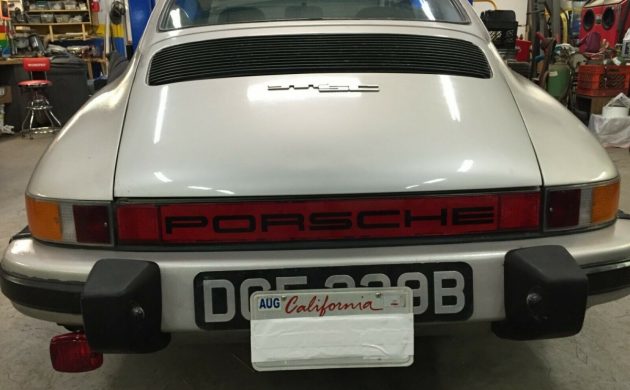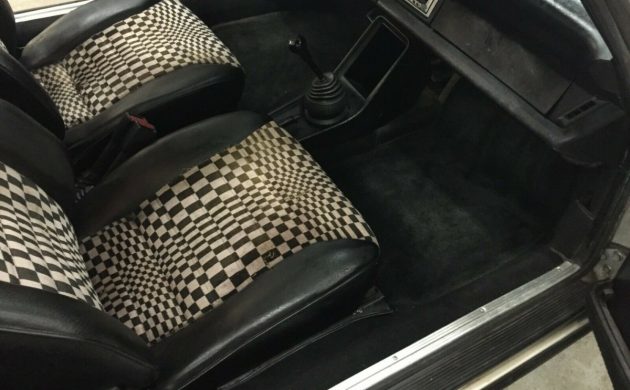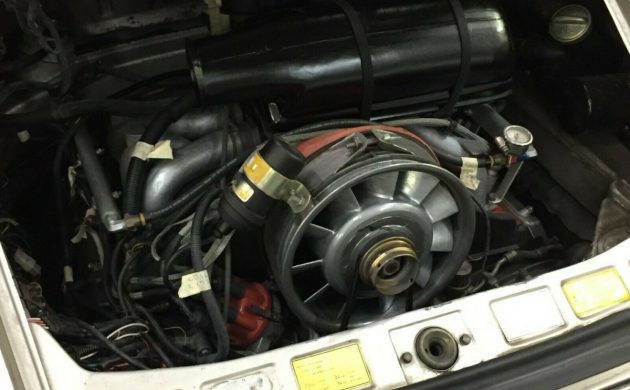When it comes to Porsche 911s, it’s hard to find one these days that isn’t desirable in some form. However, the SC trim has been appreciating nicely for some time, and if you throw in the added cache of being a true European-market example, it gets even more enticing. This 1981 911 SC is one of several cars the seller is unloading as part of a wind-down of a family collection, and it looks like a gem of a gray market specimen. If you check out the seller’s other items, it’s clear the previous owner had a passion for enthusiast vehicles with a dedicated following ranging from a turbodiesel Eurovan to a restored FJ40 Land Cruiser. Check out the 911 SC here on eBay where it’s offered with no reserve and bidding is just over $21,000.
Perhaps the best feature of a true European market Porsche is the availability of the desirable “Pasha” interior. We do see this in the 928s of the same era on occasion, but its by and large limited to the gray market cars. It’s a wild, period-correct look, and while a little bit dingy, it’s in decent shape in this 911. The 911 SC comes with a whole assortment of other features unique to the European market specimens, and the seller does a great job explaining what they are. The most significant of which is the flat-six engine which delivers more horsepower than the emissions-choked U.S. model.
The other big deal among Porsche enthusiasts is the Euro-spec ride height, which is lower than the standard U.S. model, and additional differences are fairly mundane: side marker turn signals in the fenders and glass composite H4 headlights. The bumperettes are also smaller and slightly less gargantuan than the U.S. models. Overall, most observers likely wouldn’t notice the bulk of these differences, but to an air-cooled collector, they’re al quite desirable and a great way to set your 911 apart from the legions of other owners at the next Porsche Club of America gathering.
The seller reports that this 911 runs well with no known issues and comes with a clear U.S. title, so all the importation affairs are seemingly squared away. Of course, this 911 SC was likely imported in the glory years of gray market cars that seemingly came into the U.S. with relative ease, which helped them make it through various ports of entry with all of the desirable European-spec parts still attached. The seller has several desirable 911s for sale, but this gray market SC gets my vote as the one to own – and with no reserve, it’s hard to go wrong.






Nice car. The difference between the Euro and US engine performance isn’t earth shaking but who doesn’t like a few more ponies your 911.
Those seats tho
Oh my gosh, I’ve seen oranges with less orange peel than that hood!
Holy cow, you’re right! It kinda looks like spray on bed liner.
The poorly aligned body panels are of even more concern. I have an ’86 Carrera so I’m familiar with how they should fit. I wouldn’t touch this one.
When it comes to finding a good used Porsche why does every one of them seem to have one issue or another?
Rare or not, those Pasha seats are not appealing to me. I think they actually hurt the look of a 928.
Hated the pasha seats, but they have grown on me since then. I’ll take a 1978 petrol blue 928 with those seats any day.
The seller needs to get a Porsche COA, because factory Pasha on a 911 is a pretty big deal.
If authentic, the COA would state “Black leatherette w/ grey/black velour inserts/05.
I’m no Porsche expert, but are the huge rear bumper overiders “Euro spec”?
Chris… Yes. The US versions were twice as wide for some reason or another. First thing we did with our ’76 was toss the the large units and put on Euro specs. As for paint, it doesn’t look like any color sanding was attempted. You’d think these days you’d at least sand and clear coat the new paint. Even the Earl Schieb $500 stuff shines better. The interior colors and styles started with the early ’70s 911s and went through the 914s, 924s, 944s and the 928s. Our ’77 924 had plaid seat inserts which we changed to 3 color horizontal stripes.
Item location:
Miami, Florida
Absolutely fan,,,,tastic cars. I know very little about these, never could see the attraction, but I think that red light under the rear bumper is called an “Autobahn light”.
Absolutely love the unique interior. But some prefer to one of the lemmings it seems.
Howard A…. Was in Europe in the ’70s and most of the German cars had the rear high intensity red lights for running in the fog and rain. Eventually they became mandatory and are on most European cars produced for local customers. Wife’s Mini Cooper S has the lights mounted in the rear bumper but without bulbs and wiring. Never put one of the lights on our car while over there but when down in Germany from Norway driving in fog and heavy rain they were very effective. I assume if I got the bulbs and wiring installed on the Mini they would light up the whole neighborhood.
Chris… The US over riders were so big that the Euro license tags wouldn’t fit between them. Norway solved the problem by making an almost square tag for such occasions.